

Here are 5 ideas of shrubs that birds love using for shelter. Each one is a dream come true for wild birds, helping them survive the cold season and hide out from foul weather.
Read also:
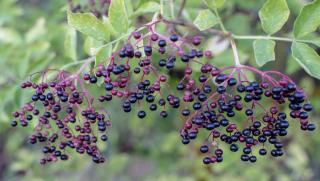 When fall comes around, birds love feasting on black elderberries. They help the tree by spreading its seeds. This shrub belongs to the Adoxaceae family, and it only requires very little care. It can cope with any type of soil and exposure. It blooms in May or June.
When fall comes around, birds love feasting on black elderberries. They help the tree by spreading its seeds. This shrub belongs to the Adoxaceae family, and it only requires very little care. It can cope with any type of soil and exposure. It blooms in May or June.
The flowers from this tree are either white or yellow, and you can use them to decorate and flavor salads or make wine.
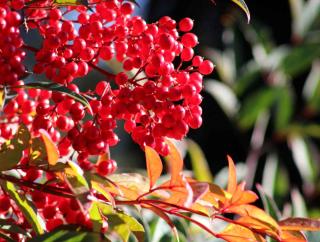 Also goes by the name “Nandina domestica”. This bamboo-like plant grows berries that look like red currant. They will feed birds throughout most of winter. It’s typically planted in shrub beds from fall to mid-March. The best spot for it is one that’s protected from wind: it can’t cope with harsh, biting cold gusts.
Also goes by the name “Nandina domestica”. This bamboo-like plant grows berries that look like red currant. They will feed birds throughout most of winter. It’s typically planted in shrub beds from fall to mid-March. The best spot for it is one that’s protected from wind: it can’t cope with harsh, biting cold gusts.
This shrub resists pollution extremely well, making it perfect for urban settings.
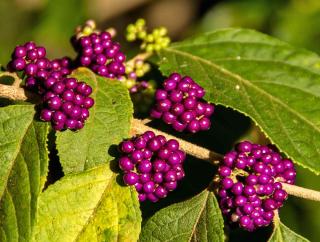 Pearls? Candy? Beads? Ah, the never-ending joy of contemplating the violently purple fruits of the Callicarpa bush. Even birds are fascinated by them. They only start pecking at the fruits after they turn brown, at the end of winter. For many a month, the purple berries remain on display.
Pearls? Candy? Beads? Ah, the never-ending joy of contemplating the violently purple fruits of the Callicarpa bush. Even birds are fascinated by them. They only start pecking at the fruits after they turn brown, at the end of winter. For many a month, the purple berries remain on display.
When planted in spring in a sunny, wind-sheltered spot, Callicarpa resists diseases particularly well.
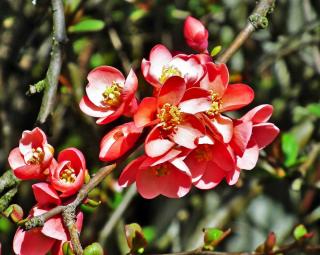 A very easy shrub to care for, Maule’s quince forms a virtually impenetrable hedge. Sparsely interspersed within the thorny branches are the pale yellow fruits, quince. When cooked, these make for tasty jams and jellies.
A very easy shrub to care for, Maule’s quince forms a virtually impenetrable hedge. Sparsely interspersed within the thorny branches are the pale yellow fruits, quince. When cooked, these make for tasty jams and jellies.
The tree is relatively hardy. It can survive temperatures hardy down to -4°F (-25°C). It adapts to all types of soil, even poor, rocky terrain.
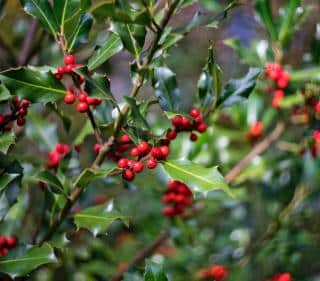 Symbol of end-of-year festivities, holly was originally a forest underbrush shrub. The bright red berries are beloved by thrush and blackbirds.
Symbol of end-of-year festivities, holly was originally a forest underbrush shrub. The bright red berries are beloved by thrush and blackbirds.
To ensure fruit-bearing, it’s essential to have both male and female cultivars. Plant the shrubs in March or April. The species loves rich and cool soil. It thrives both in full sun and in full shade.
When planting these shrubs, make sure to space them by at least three feet (one meter). This will give each one more light. Fruits will be more abundant.
M.B.